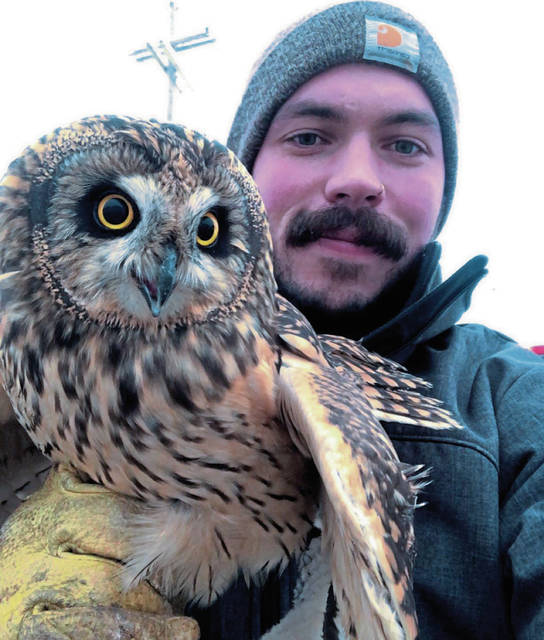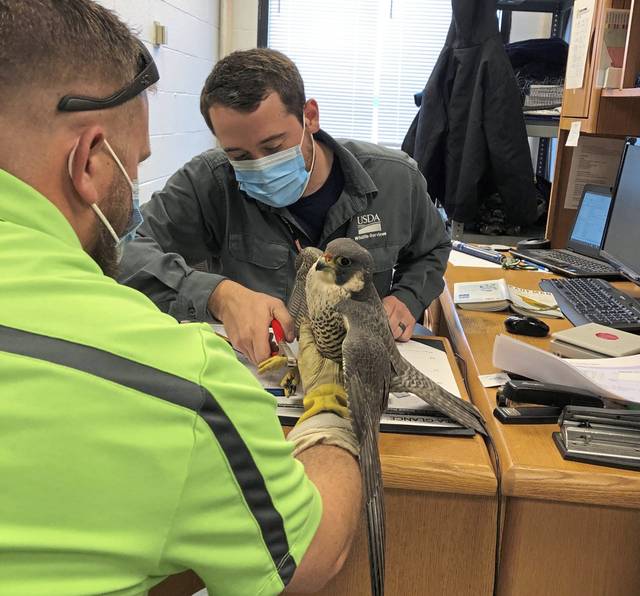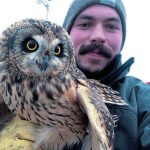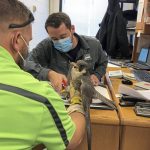Catching the fastest bird alive, the peregrine falcon, is another day at office for bird control experts at the Pittsburgh International Airport and the U.S. Department of Agriculture.
A peregrine falcon would not leave the airport grounds earlier this month despite biologists’ efforts to shoo away the threatened raptor. Experts from the U.S. Department of Agriculture’s Wildlife Services were called in to catch the peregrine after their successful capture of two state-endangered short-eared owls and a great-horned owl late last year.
These birds could pose a danger to the public if they hit a plane. Both bird species are large enough — up to 19 inches and 17 inches in length, respectively — to cause problems for aircraft. The peregrine falcon has been clocked at more than 240 mph in a dive.
Bird and other wildlife strikes are a big deal, causing more than $650 million in damage to U.S. civil and military aviation annually, according to Boeing and the Bird Strike Committee USA.
Bird strikes to aircraft have caused more than 200 deaths since 1988. A number of lives were saved with the successful crash landing of a USAirways flight on the Hudson River in 2009 after it lost engine power after hitting a flock of Canada geese.
The airport’s wildlife administrator, Ben Shertzer, has seen peregrines on the airfield before, but said they usually move on. Staff tried to scare off the peregrine, but it stayed.
To capture the falcon, USDA officials used several Swedish goshawk traps with a live pigeon, luring the raptor into the open top of the cage with a trigger to close the cage door. The pigeon was spared as it was safely located in the bottom of the cage.
After the falcon was secured, it was measured and given a health assessment, with all the collected data recorded for state and federal wildlife management agencies, including the U.S. Fish and Wildlife Service.
“When anybody looks at that band, they can track the bird back to PIT,” Shertzer said, adding that he believes it was the first peregrine falcon caught at the airport.
Planes hit birds much the same way that cars hit deer.
“There’s a large object coming fast. It confuses them and they don’t get out of the way,” said Craig Hicks, a district supervisor for USDA Wildlife Services in Bolivar, Westmoreland County.
“At the end of the day, you have planes and birds sharing the same airspace,” he said.
Shertzer and USDA are most concerned with flocks of birds, birds of prey and geese.
The birds are attracted to the airfield because of food, primarily the presence of meadow voles, “a delicacy for coyotes, red-tailed hawks, and other wildlife,” Hicks said.
Efforts to keep away wildlife include habitat management to make the airfield less attractive to hungry wildlife. But once the birds are on-site, wildlife experts will harass them into leaving, setting off low-light fireworks such as screamers and bangers.
If they have to capture and release the birds, the animals are banded. The USDA team works with a national research program that determines how far to relocate, say, a peregrine falcon to keep it from returning.
The FAA requires many airports to have a wildlife management plan, Hicks added.











